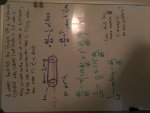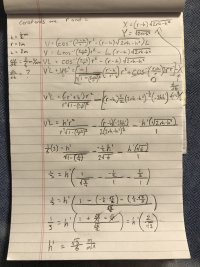A water tank has the shape of a horizontal cylinder with radius 1 and length 2.If water is being pumped into the tank at a rate of 16 m3 per minute, find therate at which the water level is rising when the water is 12 m deep.
Sorry about the sideways picture. I got an answer, but I'm not sure it's correct. I got 1/(6pi)m/min= the derivative of h with respect to t.
May someone please confirm or refute my answer?

Sorry about the sideways picture. I got an answer, but I'm not sure it's correct. I got 1/(6pi)m/min= the derivative of h with respect to t.
May someone please confirm or refute my answer?


